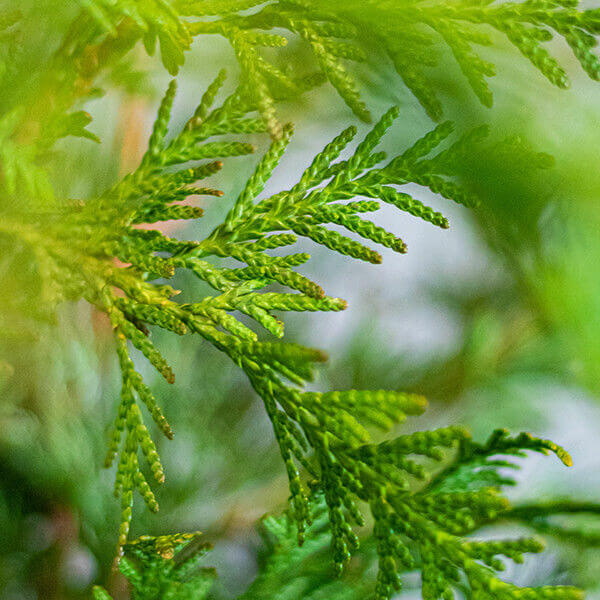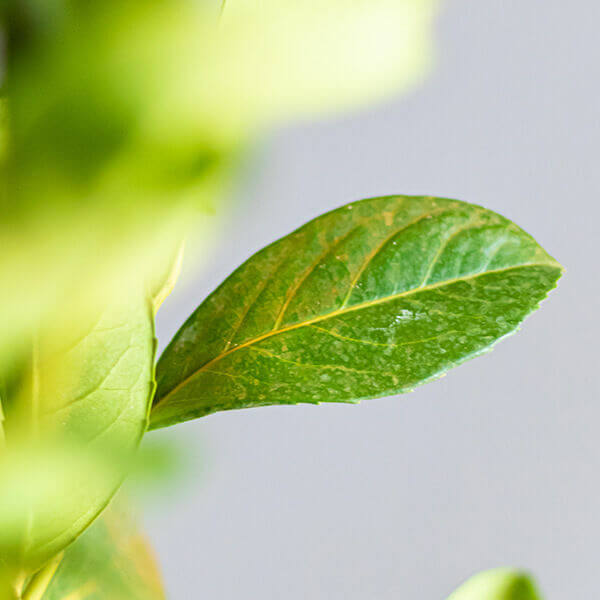Best Hedging Plants For Leaf Color
Best Hedging Plants For Leaf Color
Blog Article
Hedge Plants For Partial Shade
Boost your garden's allure with lush hedge ranges such as Yew (Taxus), Thuja, Laurel, Photinia, and Bamboo, commemorated for their structural integrity and environmental benefits.
Yew and Thuja supply evergreen coverage and winter season resilience, while Laurel provides rapid development and broad, aromatic leaves.
Photinia adds seasonal appeal with its dynamic red foliage, and Bamboo lends a low-maintenance, serene ambiance.
These hedges enhance air quality, decrease sound, and create tranquil, private areas.
Proper planting, spacing, and maintenance guarantee energetic growth and eco-friendly harmony.
Explore how these rich ranges can raise your garden's beauty and well-being.
Key Takeaways
Transform Your Garden With Lush Hedge Ranges
- Select Yew for its thick, evergreen development and unrivaled longevity.
- Select Laurel for its quick development and broad leaves, ensuring quick personal privacy.
- Pick Photinia for its vibrant seasonal foliage, which turns a striking dark red.
- Utilize Bamboo for a low-maintenance, winter-hardy hedge with visual appeal.
- Area plants 2-3 per meter and prune frequently for optimal growth and health.
Popular Hedge Plants
When transforming a garden with lush hedge varieties, it's vital to think about popular hedge plants such as Yew, Thuja, Laurel, and Photinia due to their distinct qualities and advantages.
Yew (Taxus) is highly esteemed for its longevity and dense, green growth, making it a prime choice for enduring landscapes.
Thuja is kept in mind for its evergreen foliage and robust winter season strength.
Photinia includes seasonal vibrancy with red leaves that darken with time, developing dynamic visual appeal.
Laurel uses quick growth and fragrant, broad leaves, suitable for quick personal privacy.
In Addition, Bamboo is an excellent choice for atmosphere, using a low-maintenance, winter-hardy choice that improves the garden's visual with its sophisticated, swaying walking sticks.
These selections cater to a variety of horticultural requirements and choices.
Benefits of Garden Hedges
Garden hedges offer a wide variety of benefits, making them a valuable addition to any landscape. These natural barriers are cost-efficient to carry out and offer significant wind defense, improving air flow and contributing to sound reduction. The dense foliage of hedges like Thuja and Beech ensures personal privacy by obstructing presence, producing a secluded and serene environment.
Hedges likewise play a crucial function in microclimate guideline, offering a steady environment that fosters plant development and decreases temperature level fluctuations. Their intricate leaf structures filter contaminants, improving air quality and adding to a healthier garden community.
Furthermore, hedges excel in sound reduction, absorbing and deflecting acoustic waves to lower ambient noise levels. This double performance of offering both acoustic and visual privacy boosts the overall tranquility and visual appeal of any garden.
Planting and Maintenance Tips
For an effective hedge, careful preparation of the planting area is important. Ensure the soil has proper pH and drain to support strong root advancement.
Space the plants appropriately for the selected types. Water the hedge frequently throughout its initial growth phase, changing as required with seasonal changes.
Implement a methodical bug control and disease avoidance method, utilizing chemical or natural treatments when essential. Regularly inspect for aphids, mites, and fungal infections.
Apply mulch to keep wetness and reduce weeds. Seasonal pruning promotes thick development and air circulation, vital for plant health.
Following these standards will assist you cultivate a lively, properly maintained hedge that enhances the beauty of your garden.
Spacing and Trimming Standards
Spacing and Cutting Standards
Appropriate spacing and cutting are important for cultivating healthy, aesthetically appealing hedges. Appropriate spacing makes sure each plant gets enough nutrients, light, and air flow.
Follow these standards for ideal hedge upkeep:
- Spacing: Position hedge plants 2-3 plants per meter to motivate robust growth.
- Pruning Methods: Regular pruning is important for preserving desired hedge height and shape. Trim brand-new growth in summer and cut down older wood throughout winter season.
- Seasonal Care: Change cutting schedules and approaches according to seasonal requirements to ensure plant health.
- Hedge Height: Regularly display and trim to preserve the preferred hedge height and accomplish uniform looks.
Sticking to these actions will guarantee your hedge grows, boosting both the appeal and performance of your garden.
Picking the Right Hedge
Picking the Right Hedge
Picking the appropriate hedge involves evaluating factors such as fully grown height, foliage density, and ecological durability. Successful hedge plant choice requires understanding each types' growth attributes and site-specific versatility.
For instance, Yew (Taxus) provides excellent durability and dense development, while Thuja is notable for its winter season resilience. In addition, considering upkeep requirements is essential; fast-growing types like Laurel or Privet demand routine trimming, whereas low-maintenance choices like Bamboo or Ivy may be more suitable for those seeking very little maintenance.
Ecological elements such as soil type, light schedule, and moisture conditions need to also assist the selection procedure. This careful method makes sure the chosen hedges will grow, providing both practical and aesthetic benefits to the garden landscape.
Shipment and Planting Recommendations
To guarantee your hedge plants grow, they ought to be provided by specialized couriers and planted without delay upon arrival.
Follow these important actions for effective planting:
- Soil Preparation: Enhance the soil with raw material to improve drainage and nutrient material.
- Planting Depth: Develop a trench twice the width and equal to the depth of the root ball.
- Watering Methods: Water completely after planting, keeping the soil regularly wet but not saturated.
- Mulching: Use a layer of mulch to retain moisture and suppress weeds.
Client Assistance and Service
Offered the vital role of timely assistance in horticultural pursuits, our customer support team is offered 6 days a week through telephone, e-mail, and social networks to use skilled advice and swiftly deal with any concerns. Their dedication to quick response times ensures customer satisfaction by dealing with inquiries associated with plant health, ideal planting techniques, and maintenance schedules.

Action Time
-------------------
Within 24 hours
This extensive support group, enhanced by an excellent 9.3/ 10 consumer ranking, highlights our commitment to enhancing the gardening experience for every client.
Frequently Asked Questions
For How Long Does It Take for Hedge Plants to Establish?
Hedge plants typically require one to three years to become fully established, with the exact duration varying by types and growing conditions.
Reliable care throughout this important duration is vital for robust development. Constant watering, watchful weed control, and appropriate fertilizer application are critical in promoting strong root advancement.
For instance, fast-growing types like Laurel might develop quicker, while slower-growing ranges such as Yew might take longer. Persistent maintenance accelerates the facility procedure, leading to healthy and dense hedges.
What Are the Best Hedge Plants for Personal Privacy?
The concern of the finest hedge plants for privacy involves evaluating evergreen and deciduous alternatives.
Evergreen hedges like Thuja, Laurel, and Cypress supply year-round protection, ensuring constant personal privacy.
In contrast, deciduous hedges such as Beech offer seasonal personal privacy, shedding leaves in chillier months.
Key upkeep ideas for privacy hedges consist of routine trimming, fertilizing in spring, and correct spacing-- normally 2 to 3 plants per meter.
In addition, constant watering and thorough weed removal are essential for promoting healthy, thick growth.
Can Hedge Plants Attract Wildlife to My Garden?
Yes, hedge plants can bring in wildlife to your garden by offering essential advantages like shelter, food, and nesting sites, therefore improving regional biodiversity. For circumstances, yew, holly, and laurel are outstanding for bring in birds, while ivy supports a variety of pests.
Nevertheless, it is necessary to keep in mind that there are some disadvantages, such as increased upkeep to manage insects and routine upkeep. Thoroughly selecting and preserving hedge ranges can help balance these disadvantages and advantages, ultimately promoting a vibrant and sustainable community in your garden.
Are There Any Blooming Hedge Plants Available?
Yes, there are flowering hedge plants readily available that can improve the appeal of your garden.
For example, Elaeagnus, also understood as Olive Willow, produces aromatic white flowers in the fall, adding a touch of beauty.
Photinia, another popular option, showcases lively red leaves that mature into a rich green, producing a vibrant visual effect throughout the seasons.
To make sure these plants thrive, it's vital to practice correct pruning strategies and seasonal upkeep, such as trimming new growth in the summertime and cutting down in the winter season.
These measures will help maintain the health and aesthetic appeal of your flowering hedges.
How Do I Prevent Insects in My Hedge Plants?
To avoid insects in hedge plants, utilize natural insect control approaches and keep correct hedge care. Present beneficial insects like ladybugs, which prey on harmful pests, to create a balanced ecosystem.
Frequently check your hedges for indications of problem and promptly remove any afflicted parts to avoid the spread. Additional resources Make sure the health of your hedges by using balanced fertilizers and providing adequate water.
Make use of mulching to maintain soil wetness and appropriate spacing to decrease plant stress and promote robust growth. These practices jointly assist in lessening pest issues and keeping a healthy hedge.
Conclusion
In essence, choosing the ideal hedge ranges such as Yew, Thuja, and Laurel can transform any garden into a peaceful haven. These plants supply year-round plant, enhance aesthetic appeal, and deal practical benefits like sound reduction and wind protection.
Appropriate planting methods, accurate spacing, constant watering, and seasonal trimming are essential for ideal growth.
Dependable shipment services and professional customer assistance guarantee a smooth experience from purchase to planting, making it simpler than ever to raise your outside space.
Garden hedges provide a wide range of advantages, making them a valuable addition to any landscape. These natural barriers are cost-efficient to execute and provide considerable wind protection, improving air circulation and contributing to sound decrease. The dense foliage of hedges like Thuja and Beech makes sure privacy by blocking visibility, producing a remote and serene environment.

Pruning Methods: Regular pruning is essential for keeping preferred hedge height and shape. Trim brand-new development in summer and cut back older wood throughout winter season.
Report this page